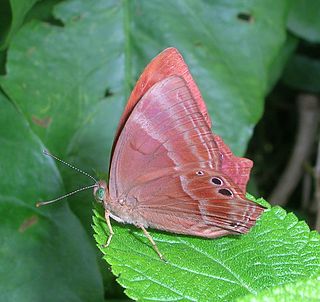
Abisara echerius, the plum Judy, is a small but striking butterfly found in Asia belonging to the Punches and Judies family (Riodinidae). It is difficult to distinguish it from Abisara bifasciata.

Abisara neophron, the tailed Judy, is a small but striking butterfly found in India that belongs to the Punches and Judies family (Riodinidae).

Ixias pyrene, the yellow orange tip, is a small butterfly of the family Pieridae, that is, the yellows and whites, which is found in Sri Lanka, India and southeast Asia.

Euchrysops cnejus, the gram blue, is a small butterfly that belongs to the lycaenids or blues family. It is found from India to Australia. The species was first described by Johan Christian Fabricius in 1798.

Curetis bulis, the bright sunbeam, is a species of butterfly belonging to the lycaenid family. It is found in Asia.
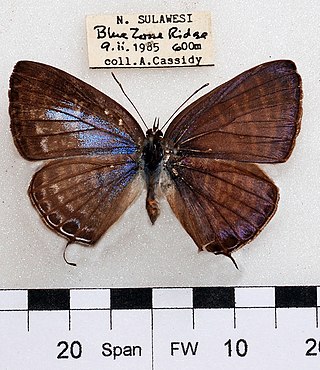
Nacaduba pactolus, the large four-line blue, is a species of lycaenid butterfly found in Indomalayan realm.

Neptis is a large genus of butterflies of Old World tropics and subtropics. They are commonly called sailer butterflies or sailers, or more precisely typical sailers to distinguish them from the related blue sailer (Pseudoneptis).

Acraea alciope, the Hewitson's acraea or alciope acraea, is a butterfly in the family Nymphalidae which is native to the African tropics and subtropics.
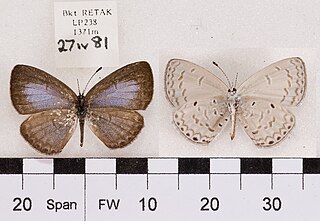
Monodontides musina, the Swinhoe's hedge blue, is a butterfly of the family Lycaenidae. It is found in South-East Asia, including India.
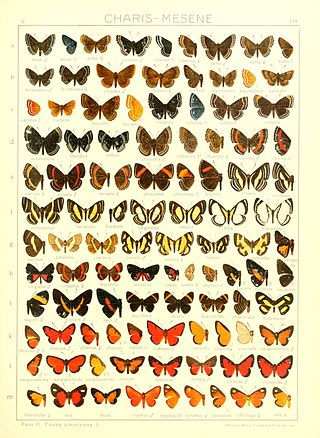
Mesene is a genus in the butterfly family Riodinidae present in the Neotropical realm.

Melanis is a genus in the butterfly family Riodinidae present in the Neotropical realm.
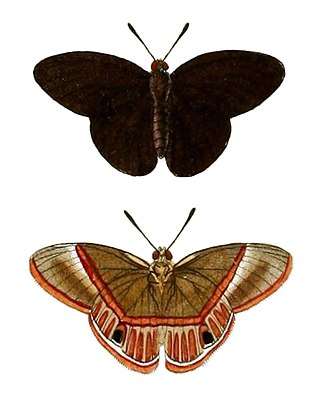
Euselasia is a genus of butterflies in the family Riodinidae. They are present only in the Neotropical realm. The genus was erected by Jacob Hübner in 1819.
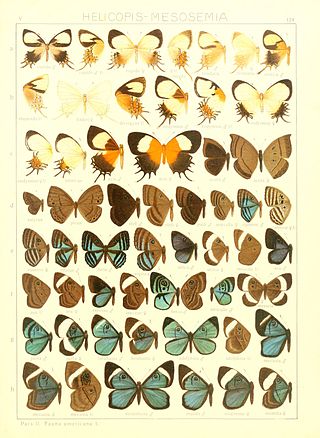
Mesosemia is a genus in the butterfly family Riodinidae present only in the Neotropical realm.
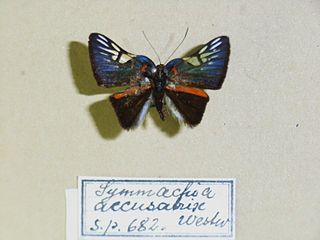
Symmachia is a genus in the butterfly family Riodinidae present only in the Neotropical realm.

Ancyluris is a butterfly genus in the family Riodinidae. They are resident in the Neotropics.

Arhopala hercules is a butterfly in the family Lycaenidae. It was described by William Chapman Hewitson in 1862. It is found in the Australasian realm. |
















